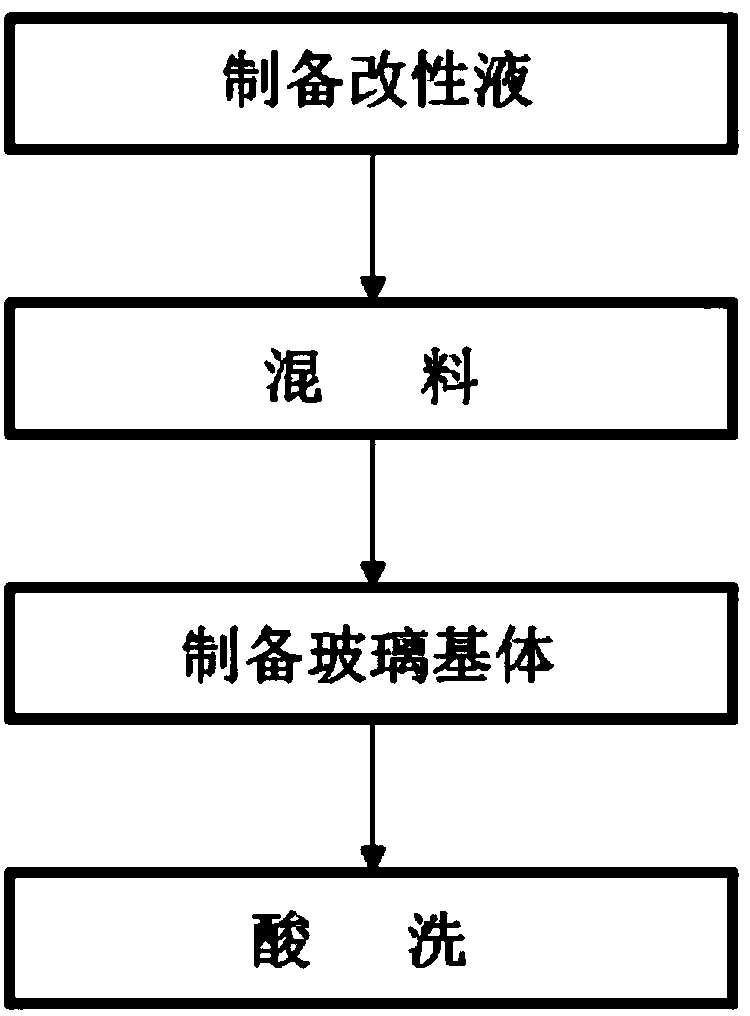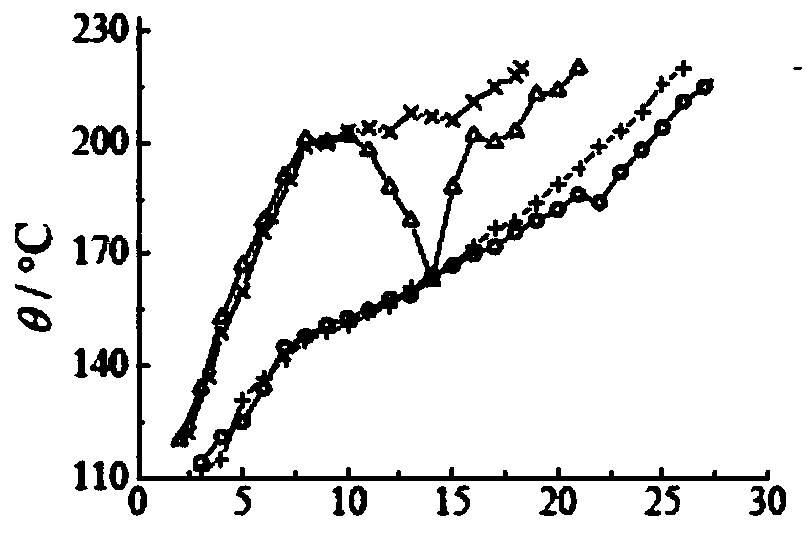High-performance modified glass material used for 3D printing and preparation method of glass material
A technology of 3D printing and glass materials, applied in the field of 3D printing, can solve the problems of restricting the promotion and application of 3D printing technology, not being able to effectively meet the actual use of workpieces, and poor surface structure precision of glass bodies, so as to achieve low pollution of raw materials and production, and production The effect of low cost and simple production process
- Summary
- Abstract
- Description
- Claims
- Application Information
AI Technical Summary
Problems solved by technology
Method used
Image
Examples
Embodiment 1
[0021] Such as figure 1 and 2 As shown, a high-performance modified glass material for 3D printing is composed of the following substances in parts by mass: 1.5% of monocrystalline silicon powder, 3.5% of nano-bentonite, 1.5% of nano-magnesia, 5% of graphene, N,N -Dimethylamide 15%, polymethacrylate 2.5%, isopropanol 0.4%, chromium oxide 0.5%, titanium dioxide 1.1%, oxide 0.3%, lithium oxide 1.1%, propylene glycol monobutyl ether 1.5%, and the balance is boron glass powder.
[0022] In this embodiment, the monocrystalline silicon powder, nano bentonite and nano magnesite all have a powder structure of 30 nm, and the boron glass powder has a particle structure of 150 mesh in diameter.
[0023] In this embodiment, the amount of N,N-dimethylamide is 2.5 times of the total amount of nano bentonite, nano magnesite and graphene.
[0024] A method for preparing a high-performance modified glass material for 3D printing, comprising the following steps:
[0025] The first step is t...
Embodiment 2
[0034] Such as figure 1 and 2 As shown, a high-performance modified glass material for 3D printing is composed of the following substances in parts by mass: 6.8% of monocrystalline silicon powder, 2.1% of nano-bentonite, 3% of nano-magnesite, 15% of graphene, N,N - 20% dimethylamide, 1.2% polymethacrylate, 0.4% isopropanol, 0.3% chromium oxide, 0.8% titanium dioxide, 1.3% propylene glycol monobutyl ether, and the balance is boron glass powder.
[0035] In this embodiment, the monocrystalline silicon powder, nano bentonite and nano magnesite all have a powder structure of 50 nm, and the boron glass powder has a particle structure of 00 mesh in diameter.
[0036] In this embodiment, the amount of N,N-dimethylamide is 3 times of the total amount of nano bentonite, nano magnesite and graphene.
[0037] A method for preparing a high-performance modified glass material for 3D printing, comprising the following steps:
[0038] The first step is to prepare a modified solution, addi...
PUM
| Property | Measurement | Unit |
|---|---|---|
| diameter | aaaaa | aaaaa |
| diameter | aaaaa | aaaaa |
| diameter | aaaaa | aaaaa |
Abstract
Description
Claims
Application Information
 Login to View More
Login to View More - R&D
- Intellectual Property
- Life Sciences
- Materials
- Tech Scout
- Unparalleled Data Quality
- Higher Quality Content
- 60% Fewer Hallucinations
Browse by: Latest US Patents, China's latest patents, Technical Efficacy Thesaurus, Application Domain, Technology Topic, Popular Technical Reports.
© 2025 PatSnap. All rights reserved.Legal|Privacy policy|Modern Slavery Act Transparency Statement|Sitemap|About US| Contact US: help@patsnap.com


